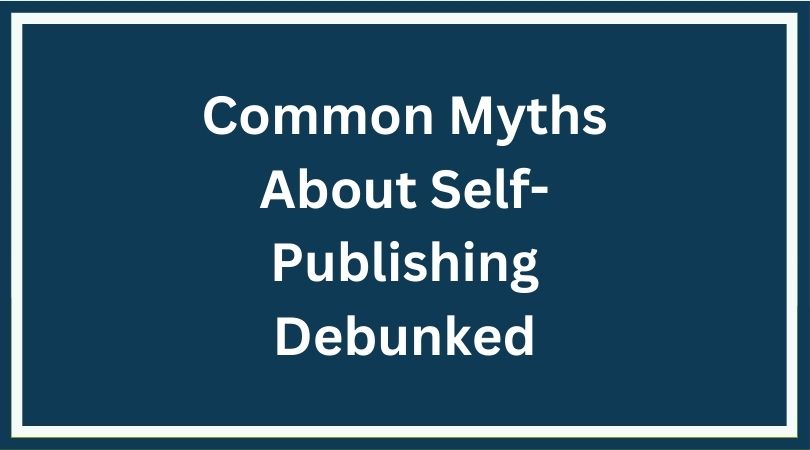Self-Editing Techniques To Improve Your Manuscript

Understanding the Importance of Self-Editing
Self-editing isn’t just an optional step; it’s a game-changer that empowers any serious writer. It’s the difference between a rough draft and a polished manuscript ready to impress. Think of self-editing as taking control and getting rid of the clutter before showcasing your masterpiece. It’s your power to shape your writing into its best form.
Part of what makes self-editing crucial is how it prepares your work for publication. Publishers and agents want writing that’s not only interesting but also clear and engaging. By cleaning up your prose, you’re more likely to catch their eye and keep their interest.
Becoming your own editor involves shifting your perspective. It’s about stepping back and looking at your work with fresh eyes, seeing it from a reader’s perspective. This shift from creator to critic helps you spot inconsistencies, plot holes, or sections that just drag on.
Developing a sharp, critical eye is key. You’ll learn to identify the parts of your manuscript that shine and those that don’t quite hit the mark. With this skill, you give yourself the power to elevate your own writing, sentence by sentence, page by page.
Developing an Editor’s Mindset
Let’s talk about a mindset shift that every writer benefits from: thinking like an editor. It’s all about taking a step back from your manuscript and learning to see it with fresh, critical eyes. This shift is not just a change in perspective, it’s a sign of your growth as a writer, and it’s something to be proud of.
First off, objectivity is your best friend here. When you’re writing, you’ve got your creative hat on, and everything’s flowing from your imagination. But editing requires a different angle. You need distance to evaluate your work like a reader, spotting opportunities for improvement that might not be obvious during the initial writing frenzy.
Detachment is essential. It may sound cold, but it’s about viewing your work as a distinct entity. This separation makes it easier to critique effectively without personal bias holding you back. You’ll find you can cut or refine sections that you’re emotionally attached to when you’re focused on strengthening the overall narrative.
Patience also plays a significant role. Self-editing isn’t something to rush through. It’s about systematically going over your manuscript, detail by detail. Take breaks, give yourself time to breathe, and return with a refreshed focus. Your persistence pays off when you start seeing the improvements in the flow and coherence of your work. Remember, it’s a process that rewards your patience and effort.
Having an editor’s mindset means embracing the reality that writing is, in essence, a process of rewriting. It’s one of the most rewarding aspects of the writing process, where you get to mold your story into its best possible form. A little patience and objectivity go a long way in making your manuscript shine.
Structural Editing: Laying a Strong Foundation
Structural editing is the process of evaluating and improving the overall structure of your manuscript. It’s where you zoom out and see the big picture, ensuring that your story not only holds together but grabs readers from the start and keeps them hooked.Getting the structure of your manuscript right sets the stage for everything else. It’s where you zoom out and see the big picture, ensuring that your story not only holds together but grabs readers from the start and keeps them hooked.
First, take a look at how your manuscript is organized. Do your chapters flow logically? Is the sequence of events clear and engaging? Sometimes, restructuring chapters or scenes can significantly enhance the narrative’s impact.
Flow matters. Readers should move through your manuscript with ease, not tripping over awkward transitions or getting lost in the plot. Look at your paragraphs and chapters—are there smooth links between scenes? Well-crafted transitions can make narratives seamless.
Pacing is another crucial element. Your story might need adjustments if it feels sluggish or rushed in places. Balancing action-packed scenes with quieter, introspective ones gives your readers a varied and engaging experience.
Don’t overlook the narrative arcs of your characters. Each character should have a clear, satisfying journey. Make sure their development is aligned with the story’s progression, adding depth and color to your manuscript.
By focusing on these structural elements, you’re crafting a more cohesive and compelling story. It’s like building a house—you want a robust blueprint before you start painting the walls.
Refining Content for Clarity and Impact
When it comes to polishing your manuscript, clarity is king. You want your readers not only to understand but also to feel engaged by every page. This is where refining your content makes all the difference.
Start by hunting down redundancies, which are words or ideas that are repeated unnecessarily. For example, phrases like ‘added bonus’ or ‘free gift’ are redundant because ‘bonus’ and ‘gift’ already imply something extra. Extra words and repeated ideas can bog down your narrative. Be ruthless in trimming them out to keep your story crisp and to the point.
Clarity isn’t just about cutting down; it’s about making your language vivid and precise. Use strong, specific words instead of vague ones. They paint more vivid pictures and ensure your message resonates.
Your tone also plays a significant role. Make sure it matches the mood and style of your manuscript. Whether it’s playful, profound, or mysterious, consistency helps create an immersive experience for your readers.
Then there’s readability, which refers to how easy or difficult it is for readers to understand and engage with your writing. Short sentences are your friend here, breaking up complex ideas into bite-sized, digestible sections. This makes your manuscript more inviting, especially to those skimming through chapters.
With these adjustments, your story becomes more accessible and compelling, winning over readers with its newfound clarity and impact.
Uprooting Common Grammar and Style Errors
Grammar might seem tedious, but nailing it is crucial for your credibility. Readers notice when something is off, even if they can’t always pinpoint the exact problem.
Look out for the usual suspects like subject-verb agreement faults, comma splices, and misplaced modifiers. These might sound technical, but catching these errors makes your writing cleaner and more professional.
Consistency in style is key. If your narrative voice starts informal and suddenly turns stiff, it can jar readers. Maintain a consistent style throughout, establishing a tone that aligns with your narrative.
Cut the jargon where you can. Simplicity shines, especially when conveying complex ideas. Avoiding excessive slang or overly complicated words helps keep readers engaged.
Focus on simplifying sentence structures. Long, winding sentences can confuse or bore readers. Try breaking them down, and don’t be afraid of using short, impactful sentences for emphasis.
Addressing these grammar and style hiccups not only improves readability but also boosts your manuscript’s overall professionalism.
Finessing Dialogue and Character Development
Dialogue can make or break the authenticity of your story. Characters feel real and relatable when they speak naturally and distinctively. Check whether each character’s voice sounds true to who they are. Consistency is gold when crafting memorable characters.
Punch up your dialogue by cutting unnecessary chatter. Every word should serve a purpose, either advancing the plot or deepening the understanding of the characters.
Listen to people around you, eavesdrop a little. Honest conversations rarely follow strict grammar rules—they’re full of starts, stops, and interruptions. Mimic that rhythm to give your dialogue an authentic spark.
Character development goes hand in hand with dialogue. As your characters talk and interact, their personality and growth should unfold naturally. This evolution keeps readers invested in their journeys.
Show, don’t tell. Instead of stating a character’s emotions, reveal them through actions, expressions, and, yes, dialogue. These subtleties make characters jump off the page and tug at heartstrings.
With finely tuned dialogue and layered character development, your manuscript transforms from a story to a vivid, engaging world.
Embracing Feedback: The Power of Peer Reviews
Feedback is like a treasure trove for writers. Having others read and comment on your work can reveal blind spots and spark new ideas.
Approach feedback with an open mind. It’s not always easy to hear what needs work, but constructive criticism is key to growth.
Find a group of trusted peers who understand your genre and style. Their insights will be more targeted and helpful.
Diverse perspectives offer fresh angles you might never have considered. They bring clarity and depth to your story.
Learning to accept feedback gracefully is crucial. Keep in mind that it’s about improving the manuscript, not about you.
Use feedback to pinpoint areas needing refinement, whether it’s plot holes, character development, or pacing issues.
Balancing your vision with others’ suggestions can elevate your work, bringing out the best in your manuscript.
The Final Polish: Preparing for Publication
The last stretch of editing is like putting on the finishing touches, ensuring your manuscript is as polished as possible before it heads out into the world. This is your chance to catch any lingering errors or inconsistencies, giving readers the smooth experience they deserve.
A final read-through is vital. Approach it with a fresh perspective or even read sections aloud. It helps you catch mistakes your brain might have auto-corrected during earlier edits.
Create a checklist of common pitfalls and things to verify. It can include elements like spelling, grammar, formatting, and consistency in character names and details. Ticking off each item ensures nothing gets overlooked.
At this stage, it’s also beneficial to consider professional editing services. An experienced editor can spot issues, providing expertise that elevates your manuscript to the highest level of professionalism.
Know when to let go. There comes a point when further tinkering offers diminishing returns. Trust in your process and preparations, and be ready to release your work into the world.
Preparing for publication isn’t just about editing; it’s about having confidence in your writing. With these steps completed, your manuscript is ready to make its mark.






